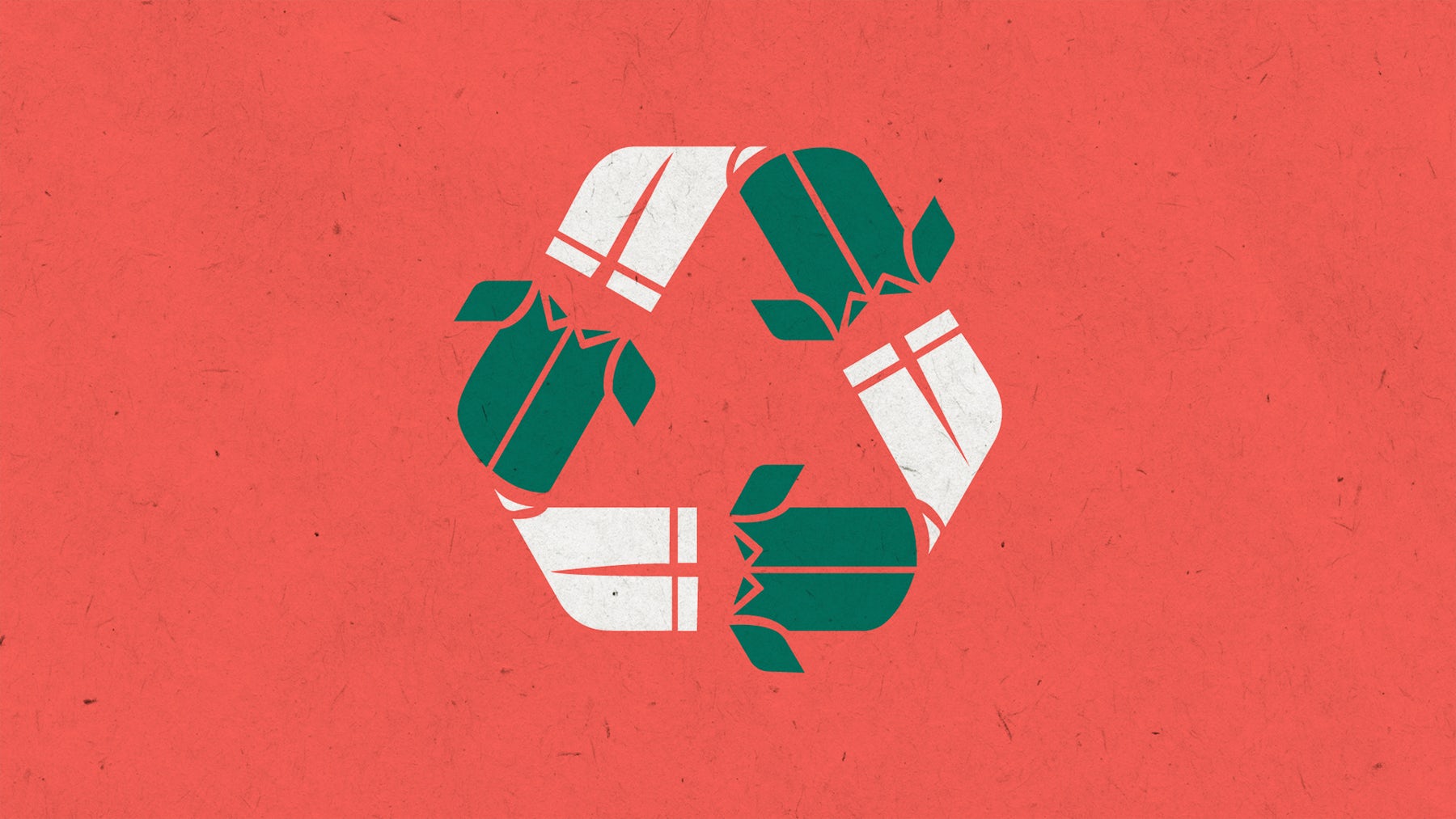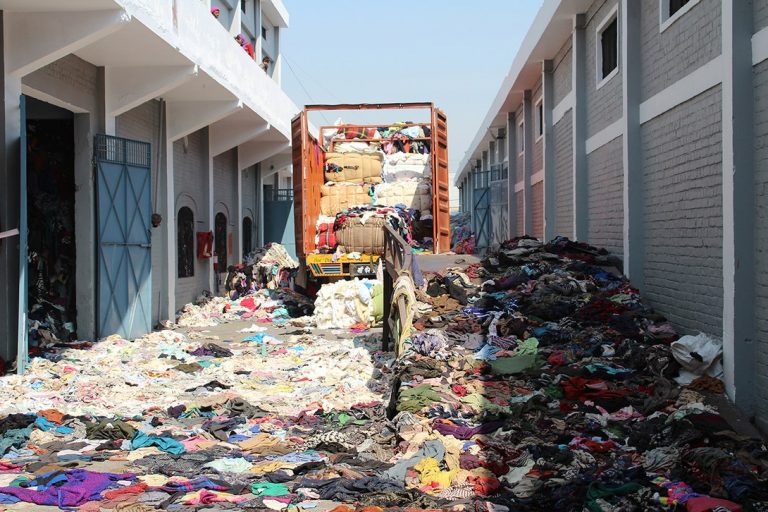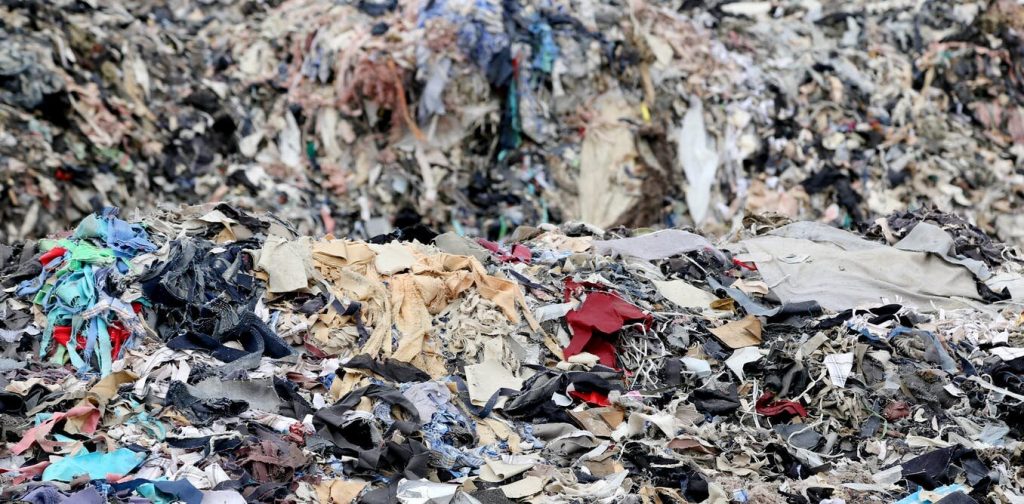The Unsustainable Linearity of the Indian Fashion Industry
7 mins read
•
Updated 1 year ago

Fashion industry is said to be the most polluted in the world, after oil. The Indian textile & apparel industry is one of the largest exporters, contributing to 10% of our GDP and employing 45 million people.[1] India’s domestic apparel market is projected to be $60 B by 2022, making it the sixth largest in the world. Cellphone ownership in India has crossed 500 million and close to 900 million people are estimated to be online by 2021. The Indian middle-class is said to expand @ 19% a year during 2018 to 2022 period.[2] These factors are instrumental in feeding a huge market for fast fashion brought mainly through boom in retail and ecommerce.
While Emerging economies tend to buy less clothes per person during a store visit than their counterparts in developed countries, research shows that on an average 60% more items of clothings are being purchased compared to 2014. A study conducted in UK in 2012 revealed that a third of the clothing ends up in landfills while many others are completely unworn.[3] While 15 million tons of footwear, clothing and other non-durable textiles products were generated in USA in 2013, only 2.3 tons were recovered for reuse.
India with its fragmented markets, loose regulatory control[5] and lack of education in fashion sustainability, has more complex challenges than its developed counterparts. Take for example, the Delhi municipality’s frail attempts to keep its landfills from overflowing. With world textile tonnage of over 30 million per year[4]; and India poised to transition to a fashion consumer market along-with its traditional role as a supplier of textiles, the future picture could be disastrous, at best.
Indian fashion industry follows a linear cradle-to-grave approach. To create a circular solution, we would first need to identify the level of awareness, commitment, motivations and barriers to the sustainable practices followed in Fashion Retail industry.

Photo Credit: Businessoffashion
Post liberalisation in India, we have subconsciously imported a throwaway culture influenced by foreign media of developed world lifestyles based on overconsumption and obsolescence[7]. While the developed countries focus on healthy sustainability as a redemption of their over-consuming lifestyle, we embrace their outgrown attributes as an outwardly projection of development.
Sustainability has been on the mind of the world since the 1972 UN Stockholm Conference on Environment. India’s fashion industry adopted a sustainability resolution (SU.RE) in August 2019 with 16 of top clothing brands, supported by the Clothing Manufacturers Association of India (CMAI) and the United Nations. They pledged to source sustainable raw materials which are traceable; and maintain a sustainable supply chain along with effective consumer communication.[6]
Indian fashion industry follows a linear cradle-to-grave approach. However, internationally, organisations such as WRAP and Ellen MacArther Foundation have understood the importance of circularity and are looking for solving the problem of zero waste and resource mismatch by transitioning towards a circular model.[8] To create a circular solution, we would first need to identify the level of awareness, commitment, motivations and barriers to the sustainable practices followed in Fashion Retail industry.
 Photo Credit: Priya Ahluwalia/Sweet Lassi
Photo Credit: Priya Ahluwalia/Sweet Lassi Before looking for Solutions, it is imperative that we identify the problems (social and environmental) created by the Indian fashion industry:
Water for Cotton
Cotton is widely used in fashion all over the world. It is a very thirsty crop. It needs a specific kind of soil which is present mostly in Maharashtra region. It uses large quantity of land, large quantities of water, insecticides and nitrogen rich fertilisers which increase soil acidity. Growing cotton in parched Maharashtra region with frequent droughts, creates an existential crisis for farmers. India is also the top exporter of natural materials such as cotton and cotton products, therefore while the consumers might be located in another country, we are directly suffering from ecological destruction. We are today facing medium to high water level stress in some parts of our country.
Dyes
Adding rips or tears to jeans by application of chemicals, discharge of hazardous chemicals into rivers/water courses, all lead to water and soil pollution. According to Ellen Mac Arthur foundation, twenty percent of industrial water pollution worldwide is due to chemical processes during dyeing or treatment of textiles.
Overconsumption & Overproduction
With world population to exceed 8 billion in the coming decade, the fashion industry is poised to expand. According to a report- “Fixing fashion: clothing consumption and sustainability”, by the UK parliamentary committee:
“The Pulse of Fashion report projects that by 2030 global apparel consumption could rise by 63%, from 62 million tons today to 102 million tons—equivalent to more than 500 billion additional T-shirts. ‘Concurrently, soaring demand for apparel—much of it from developing nations—will see the annual retail value of apparel and footwear reach at least €2 trillion by 2030 (an over 30% increase of €500 billion between now and then).”
Aspiring lifestyles in India follow western fashion pattern and the concept of choice and selection over sufficiency, fashion obsolescence renders garments unusable despite a condition of the garment. Production of variety leads to excess of fashion production and many seasons in rotation, to keep the industry going. This is clearly a case of production over-stripping demand.
 Credit: Swapan Photography/Shutterstock
Credit: Swapan Photography/Shutterstock Retail System
“Modern” retail has grown worldwide over the last fifty years and exploded in India since the last twenty. The mall culture which has stepped into Indian retail since two decades has brought about energy waste due to lighting, air-conditioning etc. Achieving a great “experience” based retail, comes at a cost of excess energy consumption, wastage of space, excessive display and production of merchandise. The price of this excess is paid directly by consumers and indirectly by the society.
Packaging
Growth of retail has a direct impact on the growth of packaging. The packaging industry provides primary, secondary and tertiary packaging for safety of product during transport and distribution. The entire Ecommerce fashion retail industry fed by the digital revolution and deep penetration of mobile internet makes shopping accessible to all areas of India, with the rural market expected to boom. Products shipped to buyers are therefore covered in layers of protective packaging, many of which might not be biodegradable or recyclable. Price competition leads to cost reduction, which might manifest in the use of single use plastic packaging. That the disposal of this packaging is at the end of the consumer, shifts the entire responsibility of manufacturers and retailers to the end fashion consumer; sometimes unaware of the implication of proper disposal.
To fight
Article 1 of the the United Nations Framework Convention on Climate Change (UNFCCC) defines "Climate Change" as: "a change of climate which is attributed directly or indirectly to human activity that alters the composition of the global atmosphere and which is in addition to natural climate variability observed over comparable time periods.”
The UNFCCC thus makes a distinction between "Climate Change" attributable to human activities altering the atmospheric composition, and "climate variability" attributable to natural causes.
Source: WMO
References
1. Texmin.nic.in. 2019. Annual Report | Ministry Of Textiles | Goi. [online] Available at: [Accessed 17 March 2020].
2. McKinsey & Company. 2020. The State Of Fashion 2019: A Year Of Awakening. [online] Available at: [Accessed 17 March 2020].
3. Wrap.org.uk. 2020. Valuing Our Clothes: The Cost Of UK Fashion | WRAP UK. [online] Available at: [Accessed 17 March 2020].
4. Chen, H. and Burns, L., 2006. Environmental Analysis of Textile Products. Clothing and Textiles Research Journal, 24(3), pp.248-261.
5. Garg, Y. and Hada, J., 2014. Slow Fashion: A Strategic Approach For Sustainable clothing in India. In: International Conference on Emerging Trends in Traditional & Technical Textiles.
6. Pib.gov.in. 2019. Union Textiles Minister Launches Project SURE On Sustainable Fashion Day At Lakmé Fashion Week. [online] Available at: <https://pib.gov.in/PressReleaseIframePage.aspx?PRID=1582685> [Accessed 17 March 2020].
7. Boone, T., 2009. Sustainable Fashion and Textiles: Design Journeys by Kate Fletcher (Earthscan, 2008). Fashion Practice, 1(2), pp.271-274.
8.Ellenmacarthurfoundation.org. 2017. A New Textiles Economy: Redesigning Fashion’s Future.[online] Available at: <https://www.ellenmacarthurfoundation.org/assets/downloads/ publications/A-New-Textiles-Economy_Full-Report.pdf> [Accessed 17 March 2020].
Fashion
fast fashion
sustainability
climate change
pollution
textile industry
